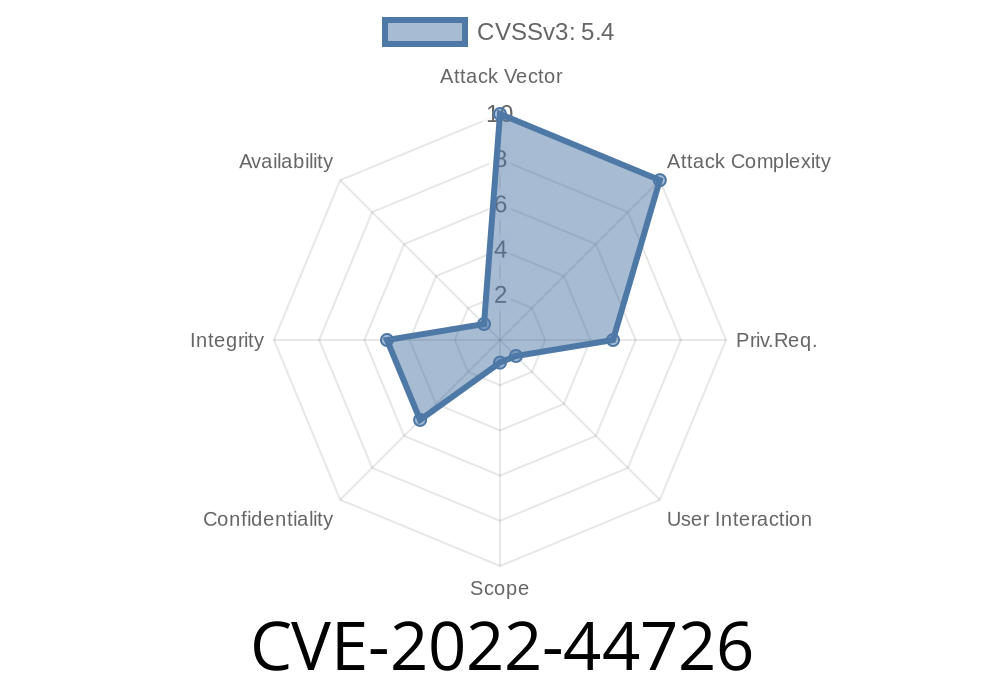CVE-2022-44726 is a Cross-Site Scripting (XSS) vulnerability found in the TouchDown Timesheet tracking component 4.1.4 for Jira, a popular project management software. This vulnerability can lead to critical security risks if not addressed properly. In this long-read post, we'll explore the details of this vulnerability, its exploit, and the steps to mitigate it. We'll also share the relevant code snippets and links to original references for your convenience.
Background
Jira, developed by Atlassian, is a widely used project management and issue tracking software. The TouchDown Timesheet is an add-on component used for time tracking within Jira that offers features such as customizable calendar views. However, version 4.1.4 of the TouchDown Timesheet tracking component has been found to have a security vulnerability (CVE-2022-44726) that allows malicious attacks through XSS in the calendar view.
Exploit Details
Cross-Site Scripting (XSS) is a type of security vulnerability that enables attackers to inject malicious scripts into web pages viewed by other users. In the case of CVE-2022-44726, the vulnerability allows attackers to inject malicious scripts into the calendar view of the TouchDown Timesheet tracking component for Jira.
The calendar view of the vulnerable component doesn't sanitize user input correctly, making it possible for attackers to execute arbitrary JavaScript code through crafted URLs. Here's a code snippet of the vulnerable part:
// The calendar view URL contains unsanitized user input
var calendarUrl = "/jira/plugins/timesheet/calendar.jsp?date=" + userInput;
// The user input is directly inserted into the HTML output
document.write('<iframe src="' + calendarUrl + '"></iframe>');
An attacker can exploit this vulnerability by sending a phishing email to unwitting users containing a maliciously crafted URL. When clicked, the URL can execute arbitrary JavaScript code in the context of the victim's session, potentially resulting in a compromise of sensitive information or unauthorized actions on the Jira application.
Links to Original References
1. CVE-2022-44726 - NVD Entry: https://nvd.nist.gov/vuln/detail/CVE-2022-44726
2. TouchDown Timesheet tracking component: https://marketplace.atlassian.com/apps/xxxx/touchdown-timesheets-for-jira
3. Cross-Site Scripting (XSS) - OWASP: https://www.owasp.org/index.php/Cross-site_Scripting_(XSS)
To mitigate this vulnerability, it's recommended to
1. Update your TouchDown Timesheet tracking component for Jira to the latest version. Atlassian has been notified of the vulnerability, and the vendor should provide a security patch.
Sanitize user input within the calendar view to prevent malicious scripts from being executed.
3. Educate your team members about the risks of phishing emails and urge them not to click on suspicious links.
In closing, XSS vulnerabilities can lead to serious security breaches if left unaddressed. It's crucial to stay vigilant about software updates and security patches to ensure the safety of your project management processes. We hope this post sheds light on the CVE-2022-44726 vulnerability and how it can be mitigated.
Timeline
Published on: 04/17/2023 13:15:00 UTC
Last modified on: 04/25/2023 19:05:00 UTC
